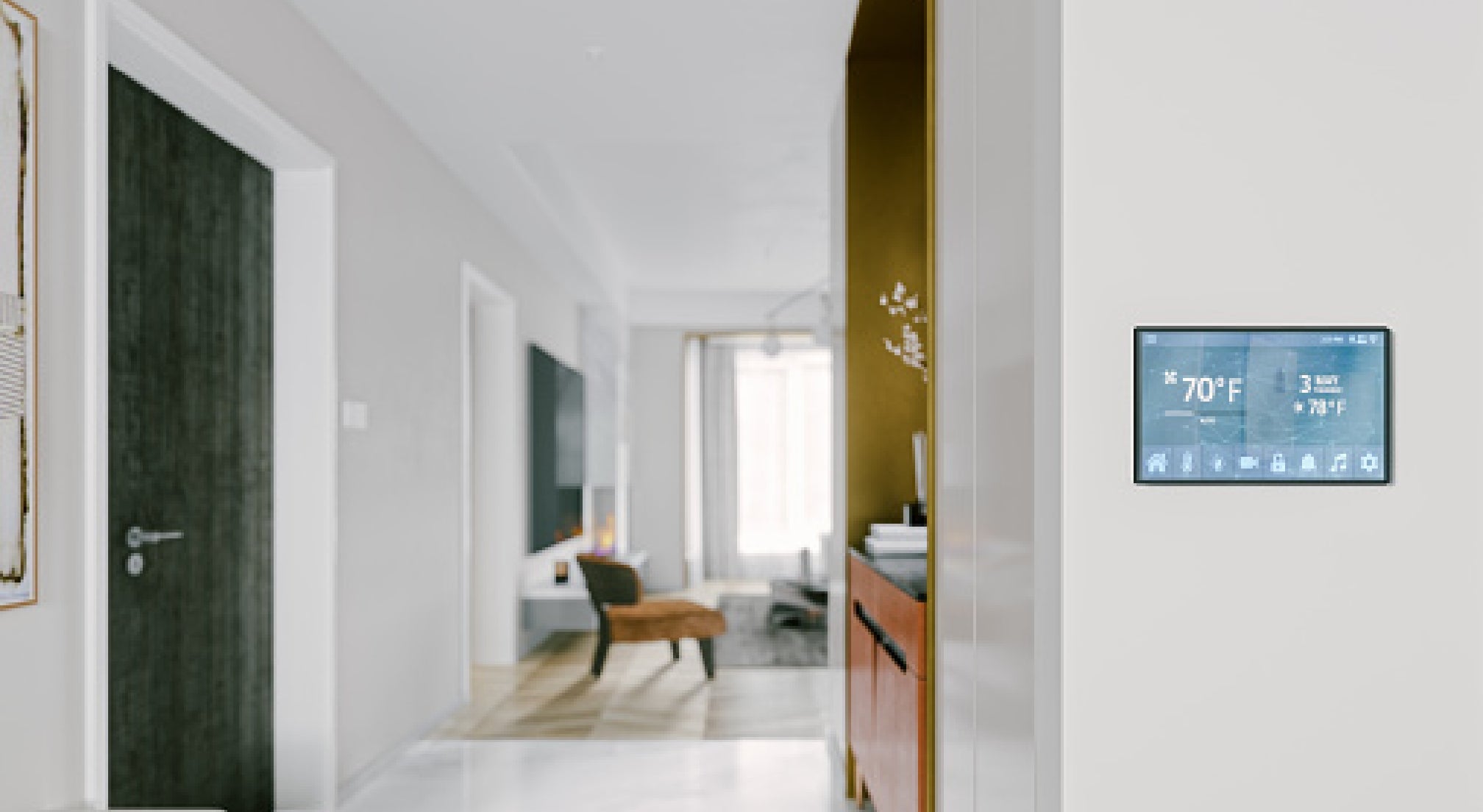What is a smart thermostat?
An advanced thermostat, also referred to as a smart or internet-connected thermostat, can give you more control, when compared to a traditional programmable thermostat, over the way your home uses energy, both at home and away. A smart thermostat works by connecting to your home’s Wi-Fi network. After installation, you input the basics of your schedule and desireåd temperatures. Over time, as you change the settings, it learns your schedule and adjusts to reduce your energy use. Many have apps that can send updates, remotely control temperatures and monitor energy use. You can see your spending on heating or cooling costs, tweak the programming to save money and watch the results immediately.
Most smart thermostats also show you how effective your heating and cooling system is by displaying the length of time it takes to make a requested temperature change. This typically discourages people from turning a thermostat way down to “cool the house faster,” which does not work. Another unique feature of many smart thermostats is geofencing. This allows your smart thermostat to know when you’re on the way home and automatically adjust your home’s temperature to your liking.
DO SMART THERMOSTATS SAVE MONEY?
The answer is yes!
Consider this, for the average American household, almost half of their annual energy bill goes to heating and cooling, which can add up to more than $900 per year. Additionally, most smart thermostats cost between $150 and $250 before rebates.
With such a small initial investment (the cost of the thermostat itself), smartå thermostats have been shown to save between 10% - 12% on heating costs, while saving 15% on cooling costs for those who have central air conditioning. With the amount you may save on heating alone, you could pay for the cost of the thermostat in the first year.
Keep in mind that some homeowners may purchase a smart thermostat for more than just the energy savings alone. For many, the allure also includes better control over scheduling, convenience, ease of use, and features such as alerts and on-unit outdoor temperature displays.

ARE SMART THERMOSTATS EASY TO INSTALL?
For most, installing a smart thermostat is something they can do themselves. Most popular brands like Nest and Ecobee indicate the homeowner can choose to install the thermostat, thus saving on the cost of professional installation. However, if you are not comfortable doing the installation yourself, or have an advanced heating and cooling system, you may want to hire a professional.
THE COST OF INSTALLING A SMART THERMOSTAT
The cost of a smart thermostat will certainly increase if you decide to have it installed by a professional. On average, it costs anywhere from $100 to $300 to have a smart thermostat installed by a professional electrician.
HOW TO CHOOSE A SMART THERMOSTAT
Each brand uses slightly different features to help homeowners save energy. Ultimately, the brand you purchase should depend on what is right for you, so you need to do your research. Here are a few tips to help you choose which smart thermostat is right for you:
Read and compare reviews online and recommendations from friends, neighbors and your local electric cooperative.
1. Make sure the thermostat is compatible with your heating and cooling system.
2. Check the level of security for the brand you are interested in.
3. Compare the features of each to ensure you are getting exactly what you expect.
4. Buy a smart thermostat that has the ENERGY STAR label
ENERGY STAR CERTIFIED SMART THERMOSTATS
It is recommended to purchase a thermostat that has the ENERGY STAR label. Thermostats with the ENERGY STAR label have been independently certified, based on actual field data, to deliver energy savings. Common ENERGY STAR certified smart thermostat features include:
• Remote Control: Using your smartphone, you can adjust the temperature in your home from anywhere with an internet connection.
• Geofencing: This feature allows your thermostat to detect when you’ve left for the day to ‘set back’ your heating and cooling system and save money on your heating or cooling bill. If you’re on the way home, the thermostat can automatically adjust the temperature to ensure you arrive at a more comfortable home.
• Learning temperature preferences: Certain ENERGY STAR-certified smart thermostats can learn your preferences automatically and establish a schedule that adjusts to energy-saving temperatures when you are asleep or away.
• Over-the-Air Updates: Your thermostat may update its software periodically to ensure it uses the latest algorithms and energy-saving features available.
Be sure to contact your local electric cooperative prior to purchasing a smart thermostat, as they may offer a rebate of up to $50 on ENERGY STAR qualified models.
- American household
- Saving on the cost of professional installation
- Few tips to help
- The ENERGY STAR label
- Listen to our podcast to learn more
